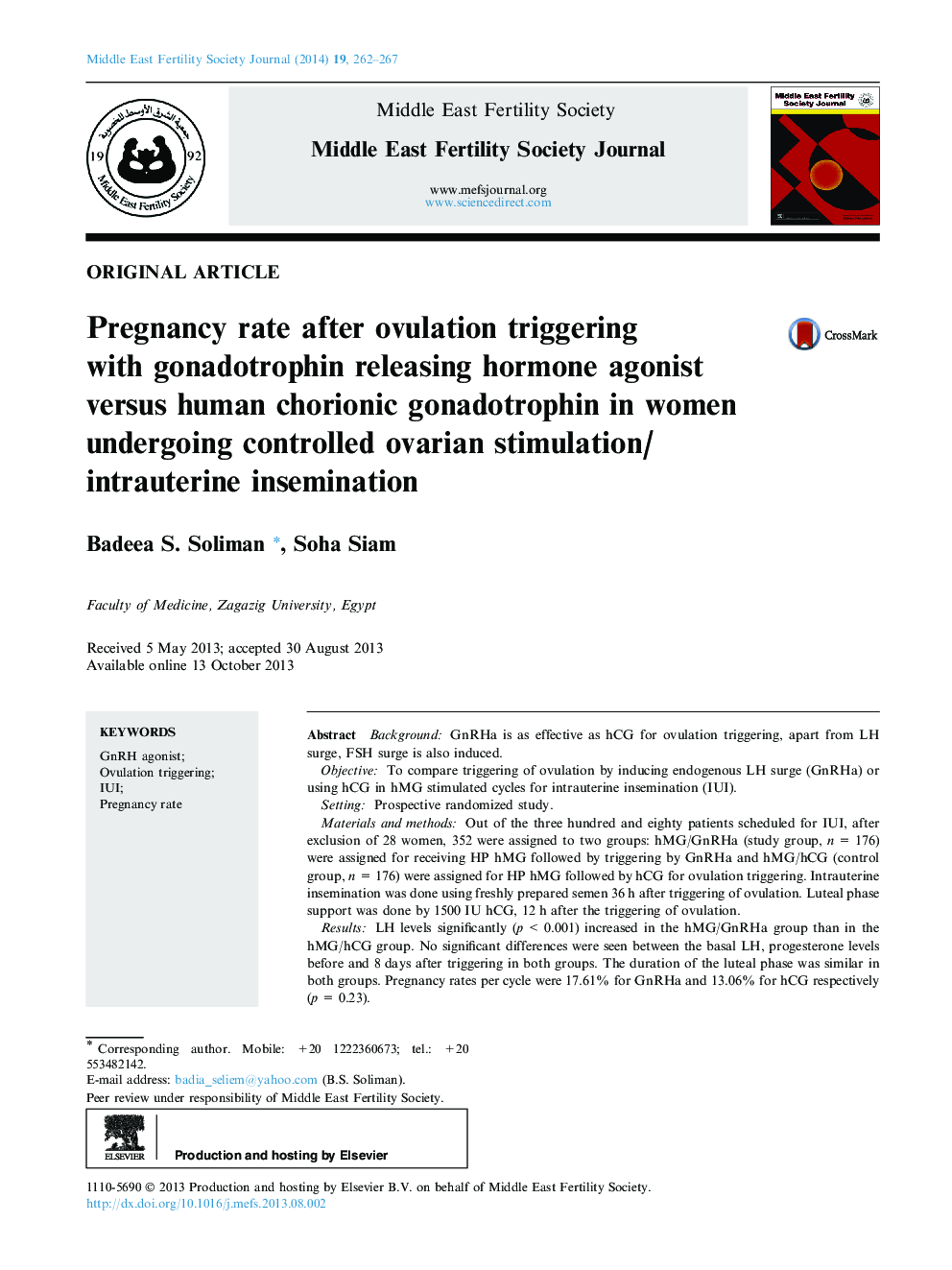| کد مقاله | کد نشریه | سال انتشار | مقاله انگلیسی | نسخه تمام متن |
|---|---|---|---|---|
| 3966114 | 1256138 | 2014 | 6 صفحه PDF | دانلود رایگان |
BackgroundGnRHa is as effective as hCG for ovulation triggering, apart from LH surge, FSH surge is also induced.ObjectiveTo compare triggering of ovulation by inducing endogenous LH surge (GnRHa) or using hCG in hMG stimulated cycles for intrauterine insemination (IUI).SettingProspective randomized study.Materials and methodsOut of the three hundred and eighty patients scheduled for IUI, after exclusion of 28 women, 352 were assigned to two groups: hMG/GnRHa (study group, n = 176) were assigned for receiving HP hMG followed by triggering by GnRHa and hMG/hCG (control group, n = 176) were assigned for HP hMG followed by hCG for ovulation triggering. Intrauterine insemination was done using freshly prepared semen 36 h after triggering of ovulation. Luteal phase support was done by 1500 IU hCG, 12 h after the triggering of ovulation.ResultsLH levels significantly (p < 0.001) increased in the hMG/GnRHa group than in the hMG/hCG group. No significant differences were seen between the basal LH, progesterone levels before and 8 days after triggering in both groups. The duration of the luteal phase was similar in both groups. Pregnancy rates per cycle were 17.61% for GnRHa and 13.06% for hCG respectively (p = 0.23).ConclusionsThere is no difference between GnRHa and hCG as regards pregnancy rate in women undergoing hMG stimulation for IUI cycles.
Journal: Middle East Fertility Society Journal - Volume 19, Issue 4, December 2014, Pages 262–267
